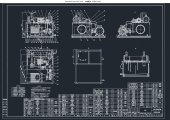陶瓷压机液压系统设计(含CAD零件图装配图)(任务书,开题报告,论文说明书18000字,CAD图5张)
摘要
陶瓷压机是机械、液压与现代控制技术相结合的产物,是陶瓷制品的专有机械生产设备。是原料加工与干燥烧成的中间环节,也是陶瓷砖生产线最重要的一个环节。若压机发生故障,则全线必须停工。
在上世纪80年代,我国从绝大多数陶瓷压机都处于手动工作方式的阶段,而如今已发展到基本占据国内市场并走向海外市场的地步。
在近几年的陶瓷工业展上,各大陶企展示了各类大吨位、超大吨位的陶瓷压机,大型化成了陶瓷行业的发展潮流。本文设计的陶瓷压机液压系统参考恒力泰的YP16800大型陶瓷压机,其最大压制力为35000N。
本设计采用现代的设计方法,对压砖机的液压系统进行详细设计。用现代的设计方法和技术,实现对压砖机的设计制造,以优化压砖机,减轻压砖机的重量,节省材料等,提高其稳定性、可控性、耐久性等。例如,在考虑经济性与环保性的条件下,设计的开式液压系统;由于流量较大,选取符合大流量、油液清洁度要求较低的二通插装阀;利用直通式电磁换向阀、比例阀、插装阀等简单阀件实现陶瓷压机压制循环的自动化。
研究陶瓷压砖机的液压系统,可以提高整机效率,以达到更好的经济效益。通过这样的设计可以减少陶瓷压机的故障率,可使压机的寿命更长,对压机的实际应用和优化具有一定的指导作用。
关键词:陶瓷压机;液压系统;泵站;大吨位;自动化
Abstract
Ceramic presses are the result of a combination of mechanical, hydraulic and modern control technologies. They are proprietary mechanical production equipment for ceramic products. It is the intermediate link of raw material processing, drying and firing, and is also the most important part of ceramic tile production line. If the press fails, the entire line will be shut down.
In the 1980s, most ceramic presses in China were in the manual work mode, and now they have developed to the point where they basically occupy the domestic market and go overseas.
At the ceramics industry exhibition in recent years, major ceramic companies exhibited various types of ceramic presses with large tonnage, and large-scale ceramics became the development trend of the ceramic industry. The ceramic press hydraulic system designed in this paper refers to Henglitai's YP16800 large-scale ceramic press. Its maximum pressing force is 35000N.
This design adopts a modern design method and carries out detailed design of the hydraulic system of the press. With modern design methods and technologies, the design and manufacture of presses are used to optimize the presses, which could reduce the weight of the presses, save materials, and improve its stability, controllability, durability, etc. For example, under the conditions of economical efficiency and environmental protection, an open hydraulic system is designed; due to the large flow rate, a two-way cartridge valve that meets the requirements of large flow rate and low cleanliness of the oil is selected; and the straight-through electromagnetic commutation is adopted. Simple valves such as valves, proportional valves, cartridge valves, etc. automate the press cycle of the ceramic press.
The hydraulic system of the ceramic tile press can be studied to improve the efficiency of the whole machine so as to achieve better economic benefits. Through this design, the failure rate of the ceramic press can be reduced, the life of the press can be made longer, and it has a certain guiding effect on the practical application and optimization of the press.
Keywords: ceramic press;hydraulic system;pump station;large tonnage;automation
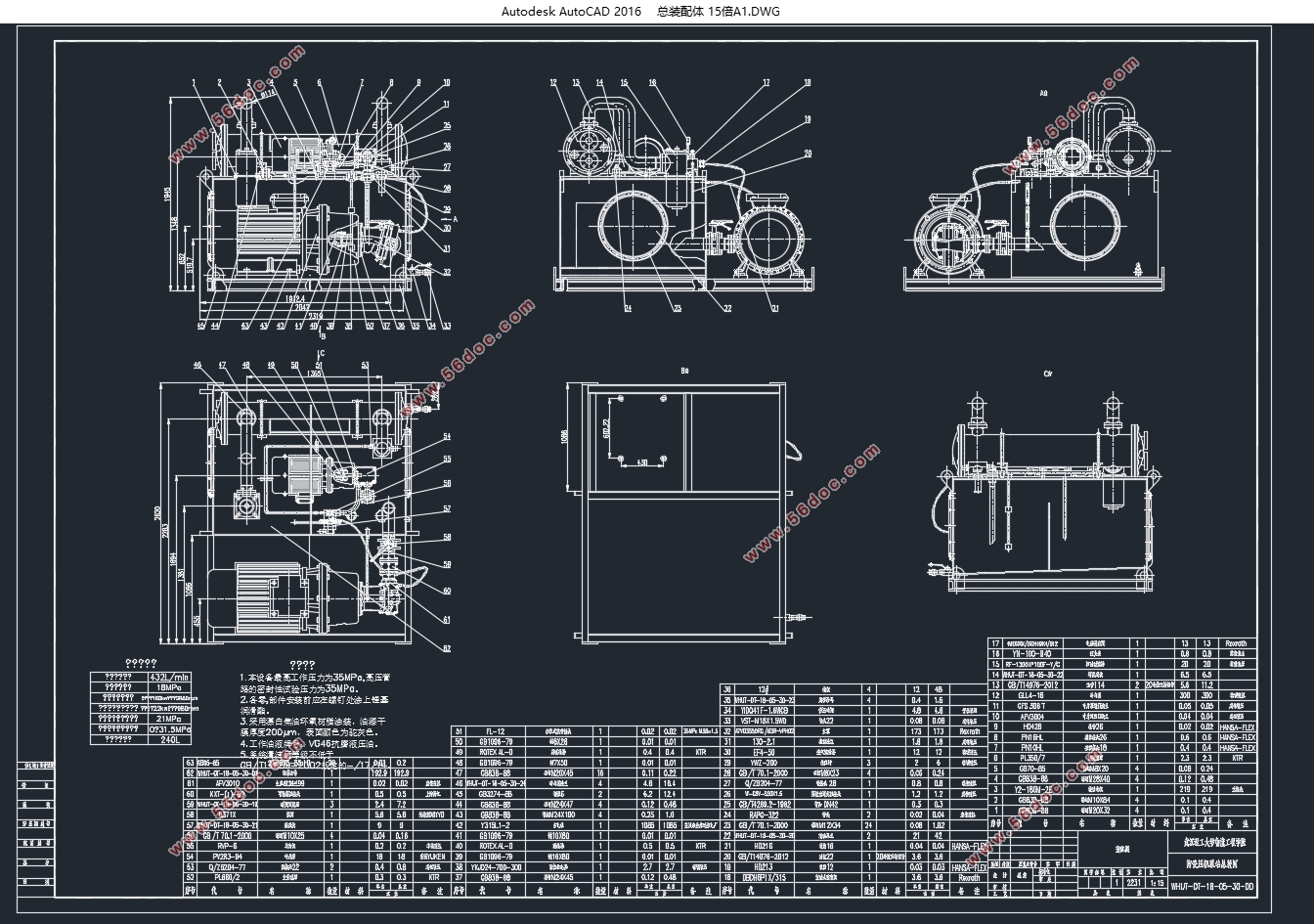
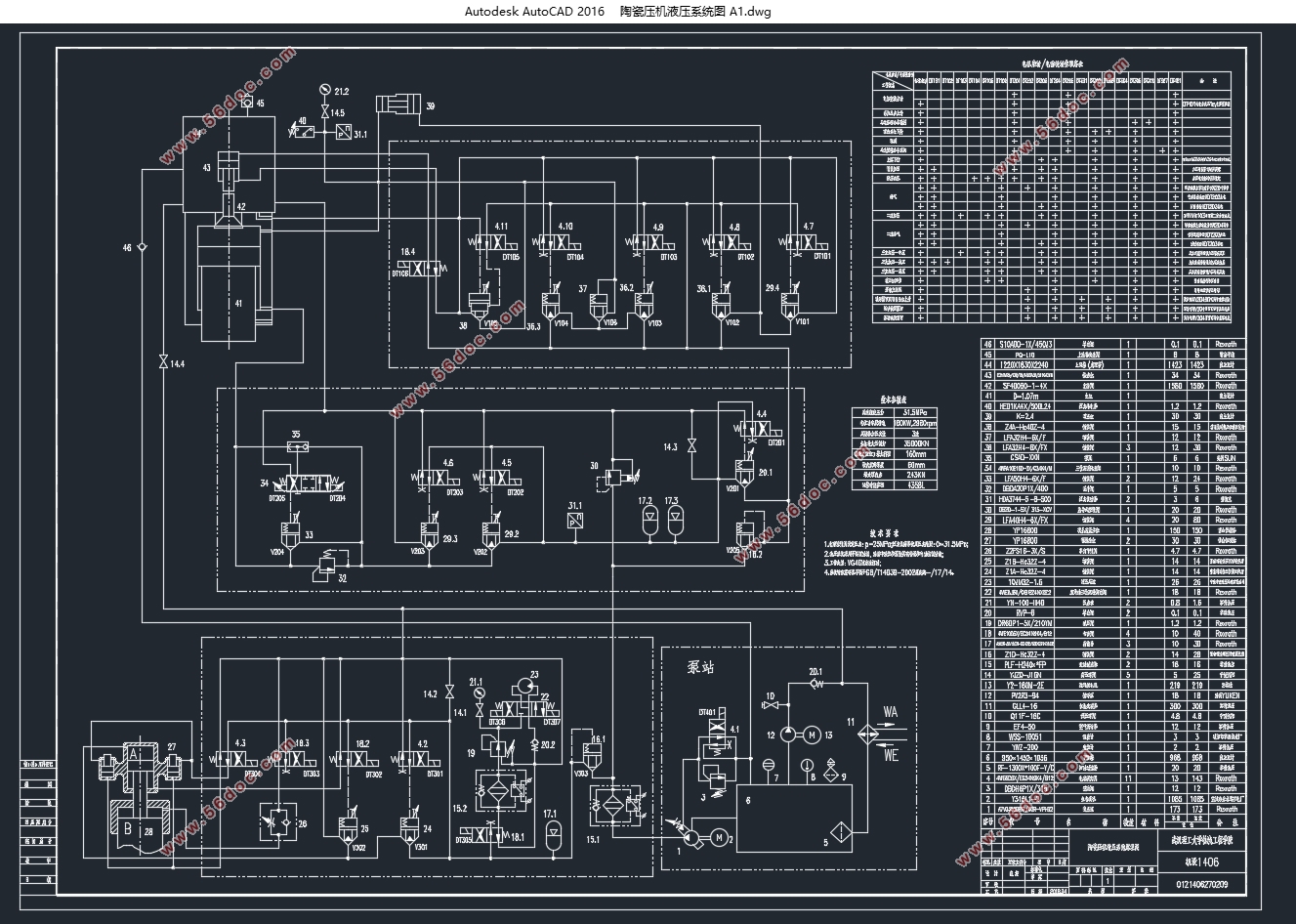
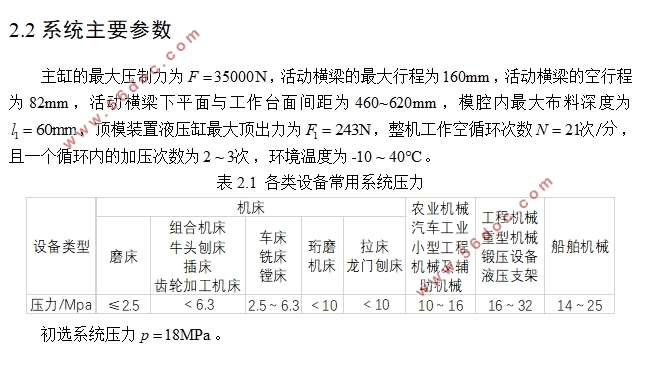
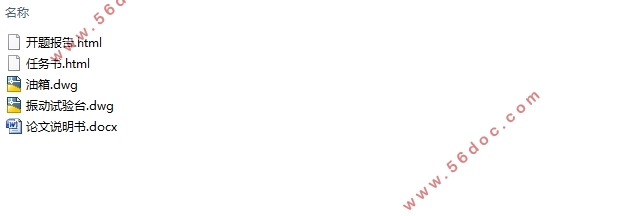
目录
摘要 I
ABSTRACT II
第1章 绪论 1
1.1 陶瓷压机简介 1
1.2 设计目的及意义 1
1.3 国内外发展现状 2
1.3.1 国内发展现状 2
1.3.2 国外发展现状 4
第2章 陶瓷压机液压系统原理图的设计 7
2.1 设计要求及工况分析 7
2.1.1 设计要求 7
2.1.2 工况分析 8
2.2系统主要参数 8
2.3 系统原理图的拟定 9
2.3.1 选择系统类型 9
2.3.2 选择执行元件 10
2.3.3选择液压泵类型 10
2.3.4 选择调速方式 10
2.3.5 选择调压回路 10
2.3.6 选择换向回路 10
2.3.7 液压系统原理图 11
2.4 压制循环工作流程 12
2.4.1 活动横梁下行 12
2.4.2 一次加压及排气 12
2.4.3 二次加压及排气 12
2.4.4 第三次加压 13
2.4.5 卸压 13
2.4.6 活动横梁回程 13
第3章 液压元件的选型计算 15
3.1 执行元件的设计计算 15
3.1.1 主缸的初步计算 15
3.1.2 顶模缸的计算 15
3.2 液压泵的选型计算 16
3.2.1 主液压泵 16
3.2.2 辅助液压泵 17
3.3 液压马达的选型 18
3.4 电动机的选型计算 18
3.4.1 主电动机 18
3.4.2 辅助电机 18
3.5 液压控制阀的选型计算 19
3.5.1 充液阀 19
3.5.2 减压阀 20
3.5.3 先导式溢流阀 20
3.5.4 比例阀 21
3.5.5 电磁换向阀 21
3.5.6 二通插装阀 21
3.5.7 单向阀 22
3.6 液压附件的选型 22
3.6.1 蓄能器 22
3.6.2 过滤器 22
3.6.3 温度计 23
3.6.4 液位计 23
3.6.5 压力表 23
3.6.6 冷却器 23
3.6.7 空气滤清器 23
3.6.8 压力传感器 23
3.6.9 压力继电器 24
3.6.10 液位控制继电器 24
3.7 液压元件明细表 24
第4章 液压泵站的结构设计 27
4.1液压泵站的类型分析 27
4.2 油箱的结构设计 27
4.2.1 系统总热量计算 27
4.2.2 油箱散热面积的计算 27
4.2.3 油箱结构尺寸的计算 28
4.3 集成块的设计 29
4.4 泵站管路的设计 29
4.5 液压泵站的总体结构 30
第5章 液压系统性能验算 31
5.1 系统的沿程压力损失 31
5.2 流经阀类元件时的局部压力损失 32
5.3 液压系统发热温升的计算 33
第6章 经济性与环保性分析 34
第7章 结论与展望 35
7.1 设计结论 35
7.2 设计展望 35
参考文献 36
致谢 38
|
